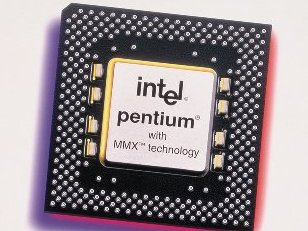Intel resurrects 90s Pentium for Larrabee
Advanced multi-core CPU will be based on Pentium MMX

Intel's upcoming massively multi-core Larrabee processor will be based on the long defunct Pentium MMX CPU, Tech.co.uk can exclusively reveal.
According to sources close to Intel , the late 90s processor core will be resurrected in a highly modified form.
Due out in 2009, Larrabee is a new processor design which majors on floating point power. It could sport as many as 32 execution cores at launch.
According to Intel documents released earlier this year , Larrabee will deliver at least one teraflop of processing punch. The chip is expected to come in several forms including a dedicated graphics processor or GPU.
Pentium MMX
Using an old processor core like the Pentium MMX for a next-generation multi-core chip like Larrabee may seem like a retrograde step. However, Intel previously revealed that Larrabee's individual execution cores would be based on a relatively simple in-order CPU architecture.
Currently, all desktop CPUs from both Intel and arch rival AMD are more complex out-of-order designs.
It just so happens that the Pentium MMX is the most recent in-order CPU design on Intel's books. In 1995, the Pentium Pro arrived and introduced a new age of out-of-order desktop CPU design for Intel.
Get daily insight, inspiration and deals in your inbox
Sign up for breaking news, reviews, opinion, top tech deals, and more.
Out-of-order designs allow processor instructions to be queued and executed with fewer stalls, or waiting periods, than in-order chips. However, out-of-order CPUs are also larger, more transistor-hungry designs.
Precisely how closely related Larrabee's execution cores will be to the original Pentium MMX isn't known. However, at the very least it's likely the elderly architecture has received a major overhaul to improve floating point processing throughput.
Larrabee GPU variant
Intriguingly, Tech.co.uk also understands that the GPU variant of Larrabee will not boast any dedicated raster circuitry. All current PC 3D chips are based on raster graphics.
Instead, Larrabee will translate raster graphics instructions into primitives or basic machine code for execution. It's a less efficient approach than a native raster chip like those from ATI and NVIDIA. But the raw grunt of those Larrabee cores could make it a workable solution.
More importantly, it will allow Larrabee to support both raster and ray-traced graphics. Ray tracing delivers much more realistic lighting and is expected to replace raster graphics in 3D gaming over the next decade
Tech.co.uk was the former name of TechRadar.com. Its staff were at the forefront of the digital publishing revolution, and spearheaded the move to bring consumer technology journalism to its natural home – online. Many of the current TechRadar staff started life a Tech.co.uk staff writer, covering everything from the emerging smartphone market to the evolving market of personal computers. Think of it as the building blocks of the TechRadar you love today.